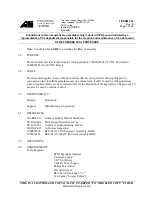
Appendix 6 Network Connection Instructions
160
BECS-D19 User’s Manual
One Terminal The Other Terminal
Usage:
a. Connection between switches through UPLINKS interface
b. Connection between HUB and switch
c. Connection between HUB and HUB
d. Direct connection between 2 PCs (NIC to NIC)
e. Connection between ports of Routers
f. Connection between ADSL Modem (Ethernet port) and NIC of PC
ii.
Notes for Network Setting Parameters
1.
MAC Address
In physical transmission at network bottom level, the computers are recognized by
physical address (MAC). So it’s necessary to keep the uniqueness of MAC address. When
the first two digits of MAC address are not zero, some network equipments regards it as
illegal MAC address, thus the equipment can’t be linked to the network. So the first two
digits of MAC address must be zero.
2.
IP Address
1)
Definition of IP Address
IP address, also called Internet address, is the sole logic address for computers in the
internet. Every computer in the internet relies on IP address to mark itself. It’s like we find
the phone by the phone number in the phone book. In one network the IP address must be
unique.
2)
Form of IP Address
One IP address includes 4 decimal integers partitioned by decimal points. Each
integer is in fact composed of 8 binary numbers. So the maximum of each integer is 255
and the minimum is 0.
3)
Structure and Classification of IP
The four parts of IP address can be divided into 2 groups. One is network number for
marking the network. The other is computer number for marking the specific machine in
one network. IP addresses are divided into 3 kinds: A, B and C.
A: the first number represents network and the following 3 numbers represent
computer.
B: the first two numbers represent network and the following 2 numbers represent
computer.
C: the first three numbers represent network and the last one represents computer.




































